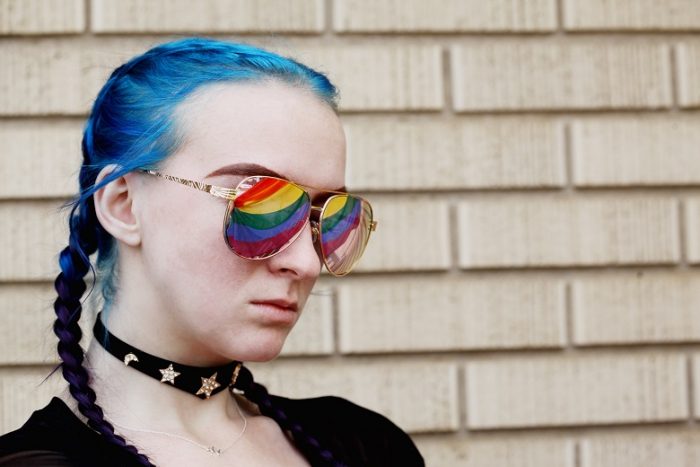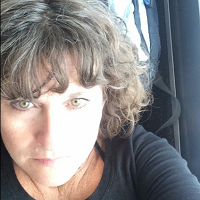When I finally plugged in my dead phone, it lit up with texts and call notifications.
I felt an immediate sense that something was wrong—that I needed to reach my children. They were staying with their father while I’d been traveling for work, and my mother’s intuition once more proved reliable.
The texts said things like, “MOM! I need to talk to you NOW!” and then from my ex, “Your daughter wants you to call her ASAP.”
I called as quickly as possible. My daughter, age 15, explained that, yet again, one of her friends was threatening suicide. This was not the first time that a friend had come to her with this kind of anguished decision.
Together, we quickly made a plan and I called her friend’s parents.
I faced a dilemma at this moment though: my daughter’s friend had not yet come out to her parents about her LGBTQ+ identity. But I feel I did as good a job as circumstances allowed of alerting her parents to the seriousness of the situation while not outing this child against her will.
I know how vital it is for these parents to have that incredibly important conversation with their child, but I also know it’s not my role to force that life-altering dialogue upon any of them.
I did feel frustrated by the experience though, and as a result I resolved to find out what I could do on my own to support these youth, whether or not their parents are aware of the struggles tormenting their daily lives.
It turns out that every day in this country, more than 3,000 9th-12th graders attempt suicide. Many of the young people afflicted with such impossible hopelessness are teens who identify as LGBTQ+. This thorough article from fellow Elephant Journal writer Joshua Plant offers even more useful and sobering information.
Through my work in social services, through my volunteer work with Pride Houston, and through my children, I’ve known some of these kids who contemplate suicide—and I want to help them. My instinct always says that their parents (if not separated from them by binding legal decision) should be involved and at least know about the struggles these kids face, but the kids themselves often don’t want to have their parents involved. These kids live in fear of their parents finding out. Living in Texas and coming out as LGBTQ+ often comes with repercussions that most families aren’t prepared to face.
So, what can we do as a society to support these kids?
There are several agencies in our communities working diligently to share the balm of education as widely as possible. One of these agencies, The Montrose Center here in Houston, is an invaluable bastion of support and understanding in our community. One of their many efforts, The HATCH Program, is designed to give LGBTQ+ youth both a desperately needed voice and a safe space to gather among those sharing a common struggle.
It has information available for community members and parents, but a key portion of the advice they share is for youth to attend meetings with other youth facing the same issues. They also advocate for parents and friends to get involved by joining the Houston chapter of PFLAG.
Another program making a difference in the lives of these children is the It Gets Better Project. Their methodology involves turning to LGBTQ+ adults to speak up and tell their stories in support of youth currently struggling through similar tough times. You can watch short video clips of adults from all walks of life sharing their stories of hope on their website.
The stories are inspiring and real, and personally, I can rarely make it through a single clip without tearing up. From real recorded conversations of people coming out to their parents to interviews with celebrities who are out or who support LGBTQ+ causes, there is something motivating and empowering for everyone.
It may feel like there is nothing we can do when we know a child who is suffering through these issues. It can be a difficult topic to discuss in our society. But my hope is that we can all bring this conversation into the mainstream by stepping forward and showing that we care.
Here are four simple steps any of us can take to get involved and support these vulnerable youth:
1. Make note of The Trevor Project’s 24/7 Lifeline at 1-866-488-7386. You can call together with a friend or loved one to speak directly to a trained volunteer about suicidal thoughts. This can be a great source for getting connected to LGBTQ+ resources in your community.
2. Learn the facts and spread them. Correct misconceptions when you hear them in conversation (whether they be online or in real life). If you are unsure of how to talk with someone expressing bigotry, please read this tip sheet compiled by the Southern Poverty Law Center.
>> It’s not “just a phase.” Embrace—don’t dismiss—an evolving sense of self.
>> There is no “cure.” This is not something that needs to be fixed.
>> Don’t look for blame. Instead, celebrate this child and his or her emerging uniqueness.
3. Let them know they are loved. Dr. Renata Sanders of Johns Hopkins University School of Medicine says that we don’t need to be experts on all things LGBTQ+ to offer our support. Just saying, “I love you and I am here for you no matter what” can be a lifeline for youth in this situation.
4. Get involved with community organizations who support these youth. Some examples of places we can look are PFLAG, our local Pride Organizations, community support centers, schools, and churches. We can also consider mentoring a youth through organizations like Big Brothers/Big Sisters. The more involved we all become, the more “safe places” there will be for these youth.
Hopefully, as more of us become supportive of these children, we will lose less of them to suicide. Having more strong and resilient youth, who are confident in themselves (no matter their identity), will bring us closer to a more enlightened society.
I am proud of my daughter for standing up for her friends. My hope is that together we can support all children and demonstrate through our actions that each one of them is precious beyond measure.

 Share on bsky
Share on bsky







Read 0 comments and reply